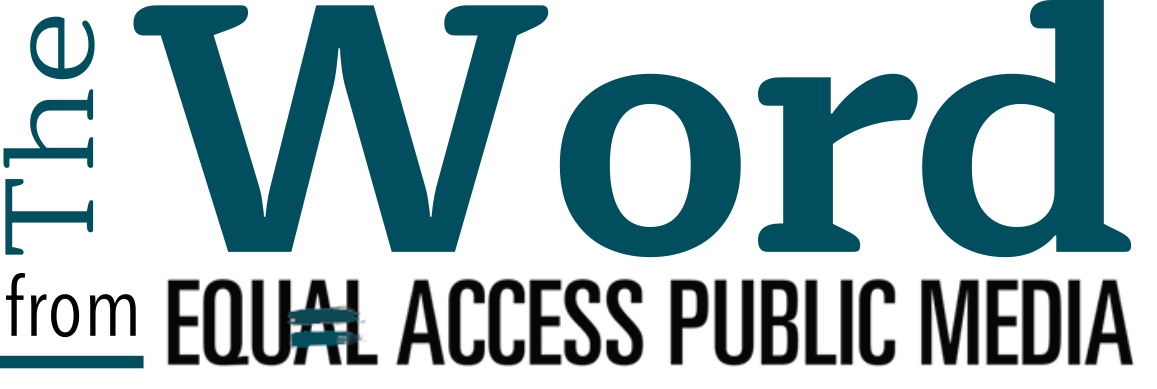The invisible readers
Accessibility gaps quietly shrink news audiences
In today’s media ecosystem, headlines tend to celebrate clicks, subscriptions, and engagement spikes.
Yet underneath the numbers lies a quieter truth: many potential readers are being left out — not because the stories lack depth or relevance, but because inaccessible design and publishing habits quietly push them away.
When newsrooms talk about audience growth, they often forget accessibility. But accessibility isn’t just an ethical checkbox, it is directly tied to the metrics newsrooms care most about: engagement, retention, and reader trust.
When design becomes exclusion
Accessibility issues in news media are far more common than many editors realize. A 2024 study on digital accessibility found that news websites often present significant barriers in navigation, missing image descriptions, and limited alternative formats for blind and visually impaired audiences.
In another report from Partners for Sight, researchers discovered that users with disabilities encounter an average of 12 accessibility obstacles per week and spend over two hours trying to overcome them often without success.
If your platform takes too long to load captions or lacks alt text, you’ve already lost readers before they can even engage. These small gaps silently affect bounce rates and reading time — the very metrics most editors use to measure success.
The invisible cost to engagement and retention
Accessibility challenges translate directly into lost engagement. A study published in The National Library of Medicine found that accessibility “is not only about compliance but essential for business benefits and inclusion.”
This insight is reflected in practice. When Nieman Lab profiled a newsroom that integrated AI captioning and alt-text generation into their publishing workflow, they found that accessibility upgrades actually increased paying subscriptions.
The message is clear: when accessibility improves, retention follows. When it’s ignored, audiences quietly disappear. The irony is that many newsrooms don’t even notice this decline — because the excluded readers never make it into analytics dashboards in the first place.
Why newsrooms still fall short
Despite growing awareness, accessibility often remains an afterthought. Part of this stems from legacy infrastructure — old CMS systems and design templates built long before accessibility standards were mainstream.
As journalist Joe Amditis wrote in Medium, Many journalists treat accessibility like flossing… something they know they should do but never prioritize.
The other challenge is invisibility. If readers can’t access your stories, they don’t show up in your analytics. And if they don’t show up, the newsroom rarely sees a reason to fix the problem.
That invisibility is even more pronounced in regions outside the Global North. A 2025 Arxiv study on web inclusivity in the Global South revealed that fewer than 40 percent of evaluated sites met basic accessibility standards for blind and low-vision users. In areas where mobile devices and low bandwidth dominate, poor accessibility isn’t just inconvenient; it is exclusionary.
From exclusion to trust
Accessibility isn’t just about compliance or reach, it’s about trust. When users experience your site as welcoming with clear navigation, readable typography, proper contrast, and captions for video, this signals care, simplicity and priority. It tells the reader: we thought about you too.
That care translates into loyalty. Nieman Lab reported that one publisher’s investment in accessibility ’t only expand readership but deepened the relationship with long-time subscribers.
In contrast, when a reader struggles with broken captions or unreadable design, they don’t complain, they simply leave. Every frustrated exit silently erodes brand trust.
What the best news room are doing differently
Encouragingly, some independent and global newsrooms are taking the lead. The Reuters Institute for the Study of Journalism highlighted outlets experimenting with plain language summaries and improved alt-text to make reporting accessible for readers with visual impairments.
Others are embracing AI-driven workflows. Captioning, audio descriptions, and smart alt-text generation can now be automated without overburdening small teams. As INMA notes, “AI transcription tools can optimize content and improve accessibility, reducing human labor while increasing reach”.
The American Press Institute also encourages integrating accessibility metrics directly into newsroom dashboards so accessibility becomes part of everyday data conversations.
These shifts prove that accessibility isn’t a tech luxury. It’s a cultural reorientation, one that connects newsroom ethics to audience growth.
Why this matters for the next wave of media creators
For those building in Web3, journalism, or exploring decentralized storytelling, accessibility is equally urgent. In an ecosystem designed to remove middlemen and empower communities, excluding users through poor design undermines that mission.
A Web3 project or decentralized news hub can’t claim to be inclusive if its interface alienates part of its audience. Accessibility should be a first principle on any projects in all aspects, not an afterthought. Because if your readers can’t access your content, they can’t engage, participate, or invest trust in your community.
The call to act
Accessibility doesn’t demand a million-dollar budget. It starts with intention:
- Write meaningful alt text for every image.
- Caption every video or live stream.
- Design mobile-first with strong contrast and clear typography.
- Integrate accessibility analytics into performance dashboards.
Every step you take toward accessibility expands your audience and deepens your credibility.
Akinyele Akintomiwa Michael is a freelance journalist and content writer whose work explores the intersection of technology, accessibility, and storytelling. He focuses on making digital spaces more inclusive while simplifying complex ideas for readers across industries.
This is opinion. While this piece contains some factual information, it is the author’s point of view.
Want more of the Word?
Become a Word Patron
Love what you’re reading? Want a to read more? Become a Patron and support The Word for as little as $2.99 a month.

